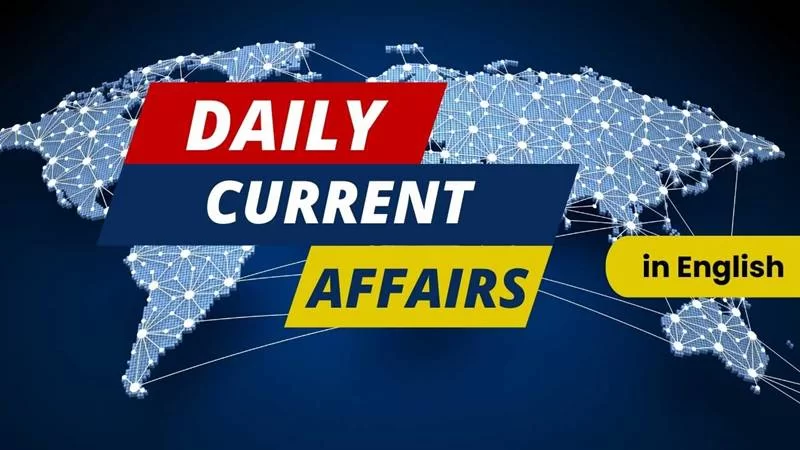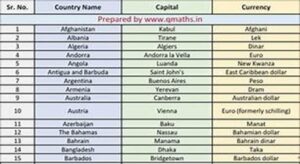
NITI Aayog (National Institute for Transforming India)
- The government, in January 2015, replaced the Planning Commission with NITI Aayog (National Institute for Transforming India).
- Compiled by NITI Aayog
- President: Prime Minister
- Vice President: To be appointed by the Prime Minister
- Objective: To achieve the Sustainable Development Goals and promote cooperative federalism by fostering the involvement of Indian state governments in the economic policy-making process using a bottom-up approach.
- The Institute shall provide relevant strategic and technical advice to Governments at Central and State level across the spectrum of key elements of policy.
- These include national and international importation of the economic front, dissemination of best practices within the country and from other countries, infusion of new policy ideas and specific issue-based support. The institution has to respond to the changing and integrated world of which India is a part.
Importance
- The 65-year-old Planning Commission has become a redundant body. It was appropriate in a command economy structure, but not anymore.
- India is a heterogeneous country and its states are at different stages of economic development with their own strengths and weaknesses.
- It focuses on bottom-up approach
Main objectives
- To foster cooperative federalism through structured support initiatives and mechanisms with states on a continuous basis, recognizing that strong states make a strong nation.
- Development of mechanisms to develop credible programs at village level and gradual integration at higher levels of government.
- To ensure that the interests of national security are incorporated into economic strategy and policy, particularly in specified areas.
- Special attention to those sections of our society who are at risk of not getting enough benefit from economic progress
Uniform Civil Code
- All sections of society irrespective of their religion should be treated equally under a national civil law which applies to all alike.
- Article 44 is consistent with the guiding principles of state policy that the State shall endeavor to provide a Uniform Civil Code (UCC) to its citizens throughout the territory of India.
- The UCC will provide one law for the entire country to apply to all religious communities in their personal matters of marriage, divorce, inheritance, adoption.
Present Status of India
- At present, Indian personal law is very complex and each religion follows its own specific laws.
- Separate laws govern Hindus including Sikhs, Jains and Buddhists, Muslims, Christians and followers of other religions.
- Also, there is diversity within communities. All the Hindus of the country are not governed by the same law, nor are all the Muslims nor all the Christians.
- For example, in the Northeast, more than 200 tribes have their own various customary laws.
Personal Law in India
- The Hindu Marriage Act, 1955
- Hindu Succession Act, 1956
- Hindu Minority and Protection Act, 1956
- Hindu Adoption and Maintenance Act, 1956
- Shariah Act of 1937 required
- Different personal laws promote communalism and it leads to discrimination on two levels:
- First, between different religions.
- Secondly, between both sexes.
Qualifications
- Simplification of national coordination laws
- Simplification of Indian legal system
- Establishment of secular society
Rajya Sabha Elections
- The Rajya Sabha or Upper House of Parliament is modeled after the House of Lords in the United Kingdom.
- A single assembly directly elected by the Constituent Assembly was considered inadequate to meet the challenges before independent India.
- Hence, a second chamber called ‘Council of States’ was formed
- The Vice President is the Chairman of the Rajya Sabha.
Structure of Rajya Sabha
- Article 80 of the Constitution specifies the maximum strength of the Rajya Sabha at 250, of which 12 members are nominated by the President, 238 are representatives of the States and two Union Territories.
- The present strength of the Rajya Sabha is 245, of which 233 are representatives of the States and Union Territories of Delhi and Puducherry and 12 are nominated by the President.
Election
- Members elected through indirect election.
- According to proportional representation system with single transferable vote.
- The allocation of Rajya Sabha seats for each state is fixed as per Schedule 4 of the Constitution. 1/3 of these seats are up for election every 2 years.
- The Fourth Schedule of the Constitution provides for the allocation of Rajya Sabha seats to the States and Union Territories based on the population of each State.
- Elections are held where there are more candidates than vacancies; Otherwise, candidates will be elected unopposed.
STATES
Separate state
- Article 3 of the Constitution of India outlines the creation of new states and changes in the areas, boundaries or names of existing states.
- Article 3 empowers Parliament to:
- (a) creating a new State by separating territory from any State or by amalgamating two or more States or parts of States or by annexing any territory to a part of any State;
- (b) increase the area of any State;
- (c) reducing the area of any State;
- (d) alter the boundaries of any State;
- (c) Change the name of any State
- The presence of Article 3 in the Constitution of India is proof that the framers of the Constitution had a vision and vision for the future of India.
ECONOMY
Export Prepardness Index
- Published by NITI Aayog.
- Objective: To identify challenges and opportunities, improve effectiveness of government policies and promote easy regulatory framework for exports.
- The index comprises four pillars, eleven sub-pillars and sixty indicators and covers 28 states and 8 union territories.
Four Pillars:
- Policy: A comprehensive trade policy that provides strategic direction for exports and imports.
- Business Ecosystem: An efficient business ecosystem that helps states attract investments and create infrastructure to enable individuals to launch start-ups.
- Export Ecosystem: Assess the specific business environment for exporting.
- Export performance: This is the only output-based parameter and examines the range of export footprints of states and UTs.
Features of Code:
- EPI is a data-driven initiative to identify key areas of importance for export development at the sub-national level (States and Union Territories).
- It examines and highlights India’s export potential by examining the various contributions made by each state and union territory.
Importance
- Examines Export Performance of States and Union Territories: It aims to examine export performance and export readiness of States and Union Territories.
- The idea behind the index is to develop a benchmark to rank these states and union territories for improving the optimal export environment in the region individually.
- Helps in identifying barriers to exports: The index is an essential tool for policy makers and exporters to identify drivers and barriers, strategize and analyze the same potential export map for the state.
- GUIDE FOR STATE GOVERNMENT: This index will be a helpful guide for state governments to assess regional performance in terms of export promotion and provide key policy insights on how to promote and develop exports.
- Stimulation of inter-state competition: Its primary objective is to bring about and facilitate favorable export-promotion policies among all Indian states (‘coastal’, ‘landlocked’, ‘Himalayan’, and ‘UTs/city-states’). regulatory framework such as subnational export promotion, creation of necessary infrastructure for exports and help in identifying strategic recommendations for enhancing export competitiveness.
Rupee-Dirham Agreement
- India and the United Arab Emirates (UAE) have signed an agreement to develop a framework to promote the use of the Rupee and the UAE Dirham (AED) for cross-border transactions.
- “The Memorandum of Understanding to Create a Framework for Use of Local Currencies for Transactions between India and the UAE aims to develop a local currency settlement system to promote bilateral use of INR (Indian Rupee) and AED (UAE Dirham).
- Dollar is the common currency of the world used in USA, Australia, Canada, Fiji, New Zealand and Singapore and other countries.

SPORTS
ISSF
- India’s Abhinav Shah and Gautami Bhanot won gold in the 10m air rifle mixed team at the International Shooting Sports Federation (ISSF) World Championship Juniors in Sangwon, South Korea, defeating the French pair of Ocean Muller and Romain Auffray 17-13. In the gold medal match.
- This is India’s third gold medal, which means they are currently second on the medal tally with one silver and two bronze medals, according to the National Rifle Association of India (NRAI)
EMINENET PERSONS
Dr. Mangala Narlikar
- Great Mathematician
- Dr. Mangala Narlikar, Founder Director of the Pune-based Inter-University Center for Astronomy and Astrophysics (IUCAA) conducted research in pure mathematics.
- Initially working at the Tata Institute of Fundamental Research (TIFR), Mumbai, he worked as a lecturer at the Universities of Bombay and Pune.
- Real and complex analysis, analytic geometry, number theory, algebra and topology are his main fields of interest
Post Views: 254
